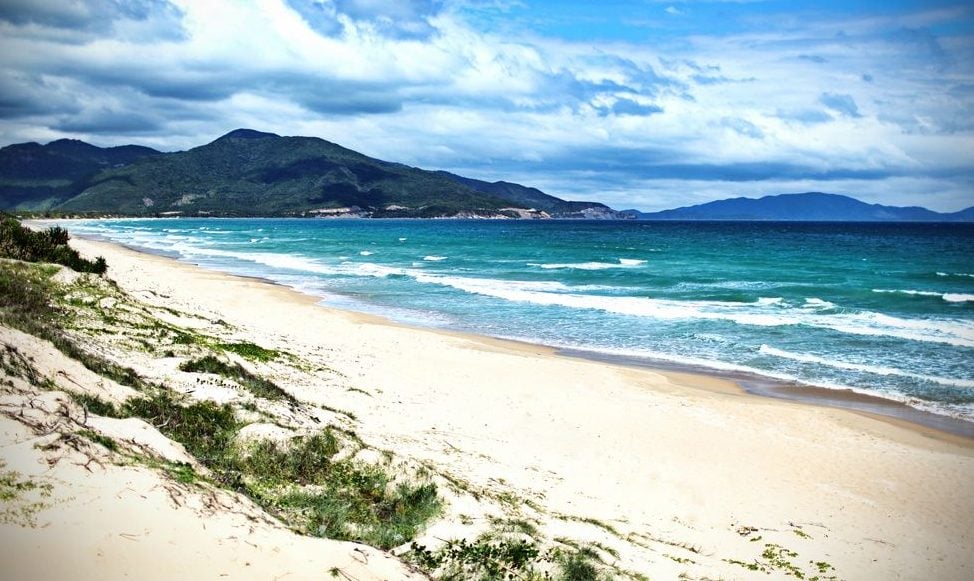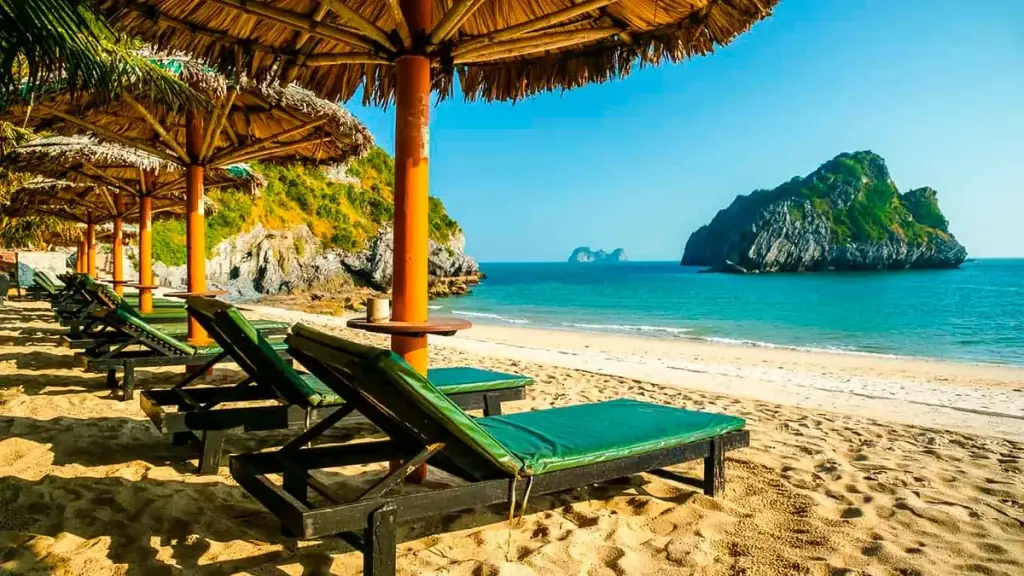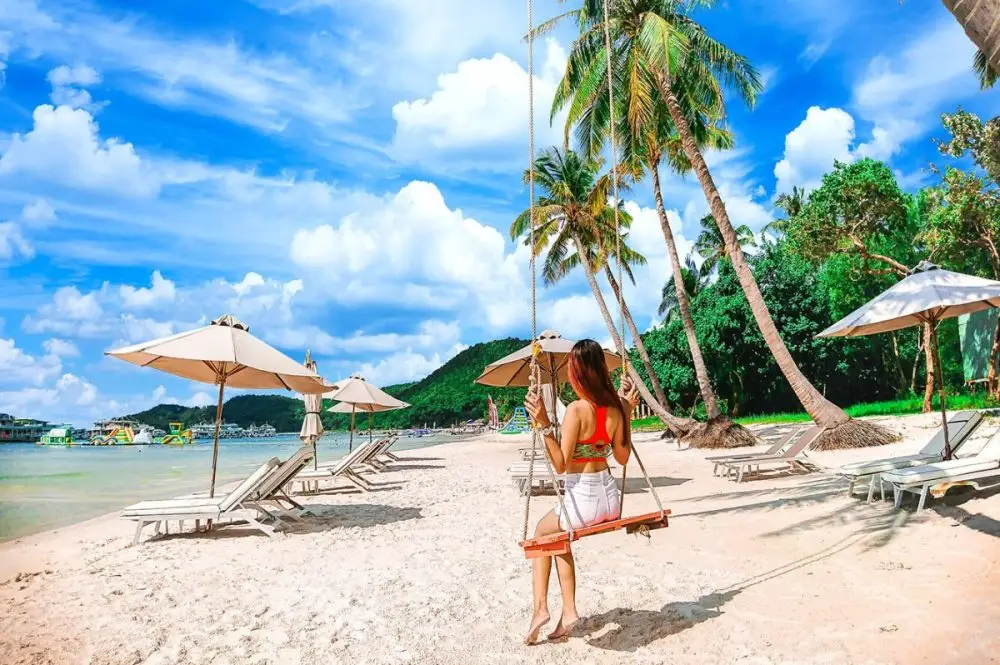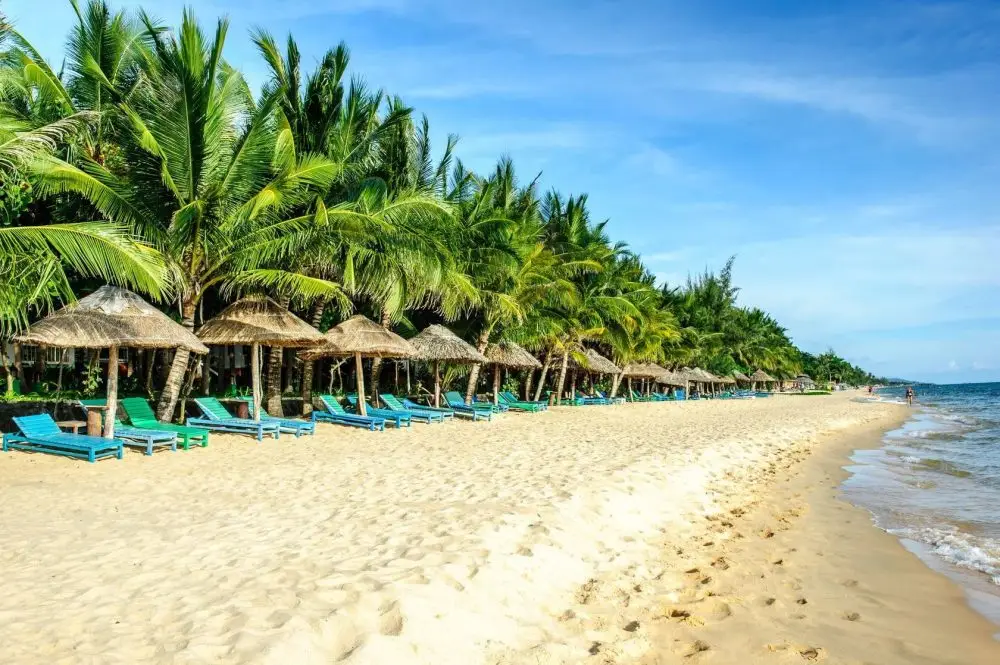Vietnam is consistently ranked among the countries of Southeast Asia that attract tourists with warm seas, clean beaches and developed infrastructure. The coastline stretches for more than 3,000 kilometres, making it possible to find a location to suit every taste – from secluded bays to lively resorts. The top beaches of Vietnam demonstrate not only the diversity of nature, but also a high level of comfort for holidaymakers.
Nha Trang Beaches: The Pearl of the South Coast
Nha Trang’s beaches include several popular zones, each with its own distinctive features. The central one stretches for seven kilometres and is distinguished by snow-white sand. Developed infrastructure attracts tourists: there are cafes, bars, water transport rentals nearby. Transparent water and gentle approach create excellent conditions for families with children. Diving tours and excursions to the islands are organised for lovers of active rest.
Bai Dai Beach: privacy and spaciousness
 The representative of Vietnam’s top beaches is also located in the Nha Trang area, but offers a completely different holiday format. Bai Dai Beach stretches along unspoilt nature and offers the opportunity to feel completely at one with the sea. The sandy strip, up to 100 metres wide, remains uncrowded even in high season. This is the preferred holiday destination for lovers of tranquillity and surfers due to the steady waves. The water is clean and the infrastructure is characterised by small bars and shade shelters.
The representative of Vietnam’s top beaches is also located in the Nha Trang area, but offers a completely different holiday format. Bai Dai Beach stretches along unspoilt nature and offers the opportunity to feel completely at one with the sea. The sandy strip, up to 100 metres wide, remains uncrowded even in high season. This is the preferred holiday destination for lovers of tranquillity and surfers due to the steady waves. The water is clean and the infrastructure is characterised by small bars and shade shelters.
Fukuoka Beaches: Vietnam’s top exotic island holiday destinations
Phu Quoc deservedly ranks among the top beaches in Vietnam due to its mild climate and scenic views. Bai Sao Beach is famous for its fine white sand resembling flour. The turquoise-coloured water and the absence of strong waves create ideal conditions for swimming. The developed resort area includes hotels to suit every budget, seafood restaurants and souvenir shops. Tourists note the cleanliness of the coastline and the care of the administration about the comfort of guests.
Ong Lang Beach: natural harmony
Ong Lang Beach in Fukuoka attracts those looking for tranquillity and unspoilt nature. The beach is tucked away in a green area and surrounded by palm trees. The length of the site is about two kilometres. The infrastructure is moderately developed: sunbeds, several restaurants and kayak rentals are offered. The feeling of seclusion remains here even in high season. The water is clear and the sea is safe and easy to access.
The beaches of Muyne: the kitesurfing capital
The beaches of Mui Ne are known for their windy weather, which forms ideal conditions for kitesurfing and windsurfing. The length of the line reaches ten kilometres, and the sand has a golden hue. Tourists appreciate the variety of water sports and proximity to the famous dunes of Mui Ne. Resorts offer equipment rental and training for beginners. Kitesurfing schools, bars and massage parlours operate on the beach, creating a complete resort ecosystem.
Hon Rom Beach is located in the Mui Ne neighbourhood and has a more relaxed atmosphere. The beach is surrounded by verdant hills and offers beautiful views for photo shoots. The sand is soft and white and the coastline is quite wide. The infrastructure is modestly developed, which adds to the charm for nature lovers. The water remains clear all year round, attracting families with children and those seeking peace.
Top Beaches of Da Nang: Vietnam’s modern resort centre
Da Nang has quickly become one of the country’s premier holiday resorts thanks to its well-thought-out infrastructure and extensive beaches. My Khe Beach is considered one of the best swimming areas. The sandy strip is more than five kilometres long and offers plenty of space for holidaymakers. The resort is equipped with state-of-the-art facilities such as showers, changing rooms, lifeguard stations and cafes. Tourists choose Da Nang for its clean sea, gentle approach and wide choice of hotels.
Non Nuoc Beach: harmony with nature
The line is located at the foot of marble mountains and is famous for its beauty. Non Nuoc Beach is among the top beaches in Vietnam due to its peaceful atmosphere and scenic views. The sand here is particularly soft and the sea is calm. The infrastructure allows you to enjoy comfort: there are recreation areas, restaurants and sports equipment hire. The beach is suitable for long walks and morning yoga classes.
An Bang Beach: relaxation and cosiness
An Bang Beach is located near Hoi An and has a leisurely atmosphere. Tourists note the calm sea, the absence of crowds and the opportunity to enjoy true Asian hospitality. The sand is fine and light, and the water is warm. There are authentic cafes and bars along the coast offering local specialities. Conditions are suitable for both swimming and beach holidays under the shade of trees.

Ky Co Beach: a paradise near Quinyong
Ky Co Beach holds a special place in the list of top beaches in Vietnam due to its seclusion and stunning views. The line is 25 kilometres from Quynhong and is accessible by land or boat. The white sand, crystal clear water and rock formations create the effect of a true tropical paradise. Tourists note the absence of crowds and commercial buildings, allowing for complete relaxation and enjoyment of nature. Local guides offer boat trips and excursions to coastal caves. In season, tourists are attracted by the excellent visibility underwater, which gives the opportunity to snorkelling.
Lang Co Beach: a combination of sea and mountains
Lang Co Beach is located between Da Nang and Hue and is considered one of the most scenic spots in the central part of the country. The beach stretches for 10 kilometres and offers soft golden-coloured sand. Holidays here combine the sea breeze with the panorama of mountain peaks. Tourists appreciate the silence and spaciousness, as well as the opportunity to combine beach leisure with excursions to historical sites. The infrastructure includes hotels, villas, restaurants and spa complexes. Lang Co Beach is often chosen by families and those seeking a balance between activity and relaxation.
Condao Beaches: Protected Nature
Condao consists of an archipelago of islands whose main attraction remains the beaches with unspoilt nature. Bai Dam Trau in Vietnam, one of the top beaches in the archipelago, stands out for its golden sand and dense vegetation. The water here is particularly clear and the marine fauna is rich. Tourists can see sea turtles and rare species of fish. Condao beaches are often chosen for secluded holidays, romantic getaways and eco-tourism. Infrastructure is minimal, making holidays here as natural as possible.
Conclusion
 The top beaches in Vietnam cover a variety of holiday formats, from lively resort areas with developed infrastructure to secluded corners of nature. Nha Trang and Da Nang offer a high level of comfort and activities, while Phu Quoc and Con Dao are suitable for those seeking peace and harmony with nature. Each beach surprises with its own uniqueness, be it the white sand of Bai Sao or the kitesurfing waves of Mui Ne. Travellers should consider personal preferences and seasonality when choosing a holiday destination.
The top beaches in Vietnam cover a variety of holiday formats, from lively resort areas with developed infrastructure to secluded corners of nature. Nha Trang and Da Nang offer a high level of comfort and activities, while Phu Quoc and Con Dao are suitable for those seeking peace and harmony with nature. Each beach surprises with its own uniqueness, be it the white sand of Bai Sao or the kitesurfing waves of Mui Ne. Travellers should consider personal preferences and seasonality when choosing a holiday destination.

 en
en  ru
ru  ar
ar  de
de  es
es  fr
fr  nl
nl  hi
hi  it
it  pt
pt  el
el 












